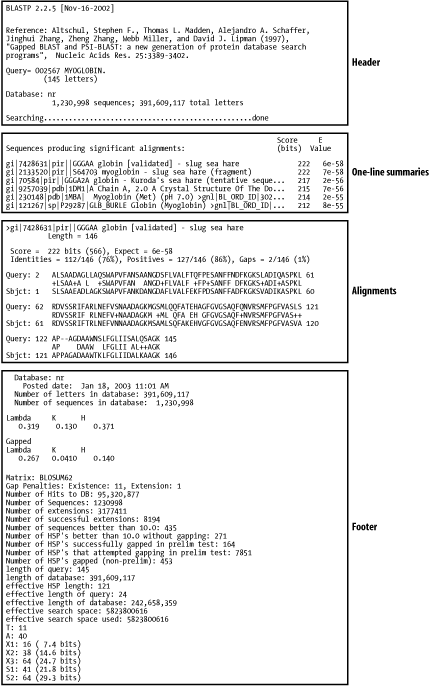6.1 Basic Structure
A standard BLAST report has four parts (see Figure 6-1).

- Header
-
The first line contains the name of the program, its version, and its
build date. If BLAST crashes or has some kind of unexpected behavior,
include this information when you report the problem to the authors.
The next piece of information is a reference to the scientific
literature, which should be cited if you publish research that
employed BLAST. The most important information in the header, the
names of the query sequence and the database, appear next. The last
line is a progress meter that is updated during the search.
- One-line summaries
-
Each line indicates the name of the
sequence, the highest scoring alignment found and the lowest E-value
for any HSP or group of HSPs. The one-line summaries are often
hyperlinked to the alignments farther below when the output comes
from a web page. If you just want to know for example, the names of
the top matches, these one-line summaries are convenient.
- Alignments
-
The alignments usually make up the
bulk of the report. Figure 6-1 shows only one
alignment. The following section discusses alignments in greater
detail and gives examples from the five standard BLAST programs.
- Footer
-
The footer reports search parameters and
various other statistics. The most important features are the word
size (W), neighborhood word threshold score (T), Expect (E), and the
scoring scheme (scoring matrix or match/mismatch values and the gap
costs) because these factors control the sensitivity and specificity
of a search. The footer labels these values clearly.
 |
